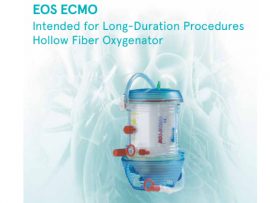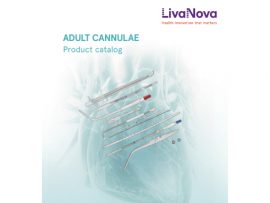Abstract Objectives Intraoperative cell salvage (ICS) is broadly used in high-risk surgical procedures to facilitate rapid autologous red blood cell transfusion, minimizing the need for allogeneic blood and its associated..
Read MoreAbstract Acute Kidney Injury (AKI) is a common complication after cardiac surgery affecting up to 40% leading to increased morbidity and mortality. To date, there is no specific treatment for..
Read MoreAbstract BACKGROUND Exposure to supra-physiologic levels of oxygen has been associated with end-organ damage and worse outcomes across multiple populations related to oxidative stress and inflammation. There is limited evidence..
Read MoreAbstract Licensure in medicine originated in London when a small group of physicians led by the scholar Thomas Linacre petitioned King Henry VIII to establish a college of physicians on..
Read MoreAbstract Background ECPR patients who receive guideline-compliant CPR will have improved survival to hospital discharge (SHD) compared to patients who do not receive guideline-compliant CPR, regardless of CPR duration. Methods..
Read MoreAbstract Heart failure remains a leading cause of morbidity and mortality globally, particularly among individuals with advanced forms of the disease. This study introduces a groundbreaking hydromagnetic artificial heart..
Read MoreAbstract We report the case of a 54-year-old man with right-lung pneumonia and contralateral pulmonary embolism (PE) conditioning severe refractory hypoxemia requiring veno-venous extracorporeal membrane oxygenation. Electrical impedance tomography (EIT)..
Read MoreAbstract This study conducts an in-vitro experiment using a mock circulation system that mimics human circulation to assess the veno-arterial extracorporeal membrane oxygenation (ECMO) system. This study aims to compare the hemodynamic..
Read MoreAbstract Preterm birth remains the leading cause of mortality among neonates. Despite improvements in neonatal intensive care over the years, current treatments for lung and kidney failure are highly invasive,..
Read MoreAbstract Although venovenous (VV) extracorporeal membrane oxygenation (ECMO) is a life-saving intervention for trauma patients with severe respiratory failure, its mortality rate is 27%, and optimal metabolic markers for its..
Read MoreIntroduction Profound hypotension and end-organ hypoperfusion is most often a consequence of inadequate systemic blood flow from primary cardiac failure (cardiogenic shock) or hemorrhage (hemorrhagic shock). However, profound hypotension may..
Read MoreAbstract Extracorporeal membrane oxygenation (ECMO) is the most important support for patients with severe cardiopulmonary failure. As the key component, the oxygenation membrane has suffered the risk of blood coagulation..
Read MoreAbstract The use of extracorporeal membrane oxygenation (ECMO) in the paediatric population has increased over time, with the ability to rescue pulmonary and cardiovascular deterioration. ECMO can be utilised by..
Read MoreAbstract Objective To describe the occurrence of cerebral desaturation (≥10% decrease or <50% in regional cerebral oxygen saturation [rSO₂]), deep anesthetic states (processed electroencephalography patient state index [PSI] <25), and..
Read MoreAbstract Objective: We aimed to characterize the impact of body mass index (BMI) on stroke in patients receiving extracorporeal cardiopulmonary resuscitation (ECPR). Methods: We queried the Extracorporeal Life Support Organization registry..
Read MoreAbstract Background The effect of Friday the 13th and Full Moons on cardiac transplantation is unknown. We investigated the impact of these superstitious events on recipient and donor qualities, complications,..
Read MoreAbstract Background Antithrombin signalling may exert an anti-inflammatory effect; therefore we hypothesised that individuals with inherited antithrombin deficiency (ATD) may have an altered inflammatory state. Aims To assess the inflammatory..
Read MoreAbstract The autonomic nervous system is critical for regulating cardiovascular physiology. The neurocardiac axis encompasses multiple levels of control, including the motor circuits of the sympathetic and parasympathetic nervous systems,..
Read MoreAbstract The use of extracorporeal membrane oxygenation has been increasing over time, in part due to the COVID-19 pandemic. Whilst lifesaving, complications that must be managed are also associated with..
Read MoreAbstract Aims This study aims to identify distinct clusters of patients undergoing coronary artery bypass grafting (CABG) based on demographic, clinical, and autonomic function characteristics and to validate these clusters...
Read MoreAbstract Background Outcomes in cardiac surgery are influenced by surgical priority, with higher mortality in emergency cases. Whether this applies to postcardiotomy venoarterial (VA) extracorporeal membrane oxygenation (ECMO) remains unknown...
Read MoreAbstract Acute poisoning may lead to life-threatening conditions that require advanced life support, such as extracorporeal membrane oxygenation (ECMO). Data about the use of ECMO in intoxications and overdose are..
Read MoreAbstract Background Simulation is increasingly utilized in the clinical training of healthcare professionals. Many perfusion programs in the United States use simulation to teach students both technical skills and effective..
Read MoreAbstract Background Anticoagulation in pediatric extracorporeal membrane oxygenation (ECMO) presents unique challenges due to developmental hemostasis, coagulation factor production, and response to anticoagulants. This process requires close monitoring to prevent..
Read MoreAbstract Background: Patients who undergo extracorporeal cardiopulmonary resuscitation (ECPR) are at risk of left ventricular distention and complications. There is emerging evidence that concurrent mechanical left ventricular (LV) unloading (e.g...
Read MoreAbstract Background There are limited data on the causes of death in patients undergoing extracorporeal cardiopulmonary resuscitation (ECPR). This study aimed to analyse the causes of death among patients who..
Read MoreAbstract EXTRACORPOREAL MEMBRANE OXYGENATION (ECMO) is a potentially life-saving intervention often used in critically ill patients with severe respiratory or cardiac failure unresponsive to conventional treatments. As the prevalence of..
Read MoreAbstract Purpose: The evidence supporting the benefit on clinical outcomes of prone positioning during veno-venous extracorporeal membrane oxygenation (V-V ECMO) for acute hypoxemic respiratory failure remains inconclusive. We aimed to..
Read MoreAbstract Aim Prehospital extracorporeal cardiopulmonary resuscitation (ECPR) has been proposed to reduce delays in ECPR delivery in refractory out-of-hospital cardiac arrests (OHCA) and improve outcomes. Our aim was to synthesize..
Read MoreAbstract Objective Extracorporeal cardiopulmonary resuscitation (ECPR) is increasingly used to rescue patients in cardiac arrest. However, minimal data guide candidacy decisions, and centers must develop their own initiation criteria, raising..
Read More



















